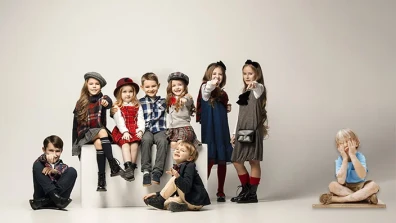Are you wondering how to make sage green paint? Undoubtedly, one of the most beautiful among the shades of green is sage, and it is lovely to have sage green on your palette.
Being a subtle green color, sage gives an aesthetic, topical and calm vibe which feels relaxing to brain. It looks absolutely elegant and assists the other colors to pop up.
In this short interesting guide, we are going to cover various methods to make sage green out of some primary colors by following a couple of methods and steps. So, read this guide to the bottom and don’t miss out anything.
Table of Contents
Sage Green? How to Form It?
What color is a sage green? Sage looks like an earthly, light green color. It makes a delicate blend and has a muted elegance. It’s not just only one color, it’s a term, you can say, to describe a family of colors.
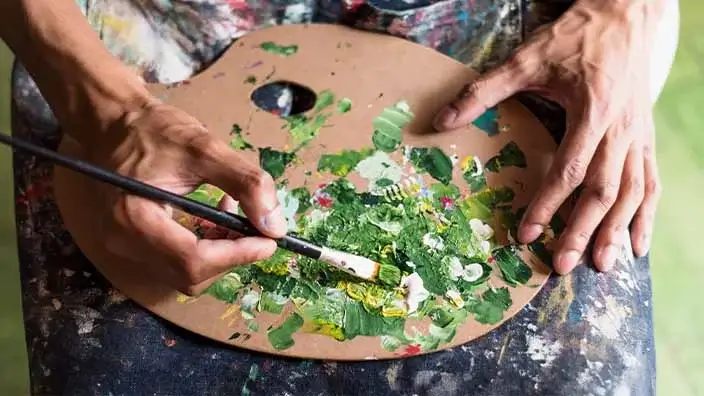
Avocado green, eucalyptus green, pistachio green, gray-green, or olive green are some similar shades to it. However, people may have their own names for all the shades of green.
Do you want to include sage green to your palette but are unable to do so? Don’t worry, it is very simple and easy to make a sage green paint, and interestingly, you can make it at your home by using primary colors in different combinations, which has been explained in different methods given below.
Similar Article: How to Make Beige Color
Useful Tools
Before we move on to the steps to make sage green, it’s important that you must have some tools as well as some primary color paints to make sage green. You will need the following tools to get started: -
- A palette or a bowl in which you will have to mix colors
- A paintbrush or a palette knife to blend the colors
- Paints (red, yellow, blue, white, black, green)
Making Sage Green
Once you have collected the necessary tools, you can try some methods and steps to make sage green color of your desired shade. There are many methods of making paints some of them you can find in another article titled How to Make Beige Color. However, below are given some of the worth sharing methods: -
1. Using Base Color
This is a very simple and easy method to create sage green from its base color. First thing you have to do is to identify the base color of the sage green.
We are going to begin this procedure of creating a sage green from its base color, which is green. You will need to have these four colors on your palette: -
- Green
- Red
- White
- Black
Now, follow these steps to get your desired shade of the sage: -
STEP 1: You must be having a shade of sage in your mind that you want to end up with in the process of its creation. You have to take a look of the greens you have and select the green that is the closest to sage green color you want. You may get started with a camo-green, mint or olive among the shades of green, though it is possible to alter any of the shades of green into sage.
STEP 2: Once you have selected a green color to create your sage from, the next thing you have to do is to take a tiny bit amount of the red paint at a time and add it to the green. You don’t have to hurry to add a big amount of red to the mixture, as you can add a color but can’t take out, and red color may overpower the mixture very quickly.
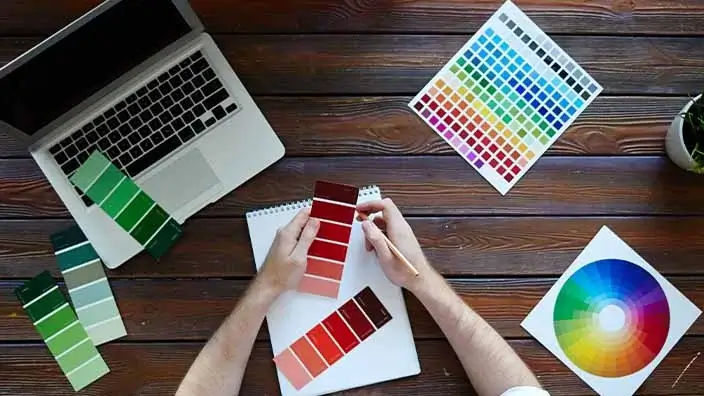
So, you need to be careful. You have to stir the colors with a paintbrush or a palette knife until there are no streaks left in the mixture and the colors get evenly blended. If your shade gets too brown, you will need to add more green paint to balance it.
STEP 3: Next comes adjusting brightness of the sage green with black and white paints if you have blended your green and red into a shade of sage, and still haven’t got the sage color you want. If your sage looks too bright, then, you would need to add a tiny amount of black to it, as black color may overpower the mixture very quickly. Then, blend it properly to mix the colors.
If it looks darker, you would have to add white color to give a brighter shade to your sage green.
2. Use Different Combinations of Colors
For this simple and easy to do method, you need to have the following colors to get your desired sage green: -
- Yellow
- Blue
- White
- Black
Now, follow the steps below: -
STEP 1: First of all, you have to mix one part blue with two parts yellow (1:2) to create the green color.

Keep mixing the colors with the paint brush or palette knife until you find no streaks in the new combination. The newly created green color would be the bright, classic green, a base color for the sage.
STEP 2: Next, you have to take and mix equal parts of yellow and basic green to create bright grass green.

As basic green has already been created from two parts yellow and one part blue. You will need to keep mixing the colors until you get both the colors properly blended.
STEP 3: What you have to do next is mixing three parts white and one part black to make gray paint.
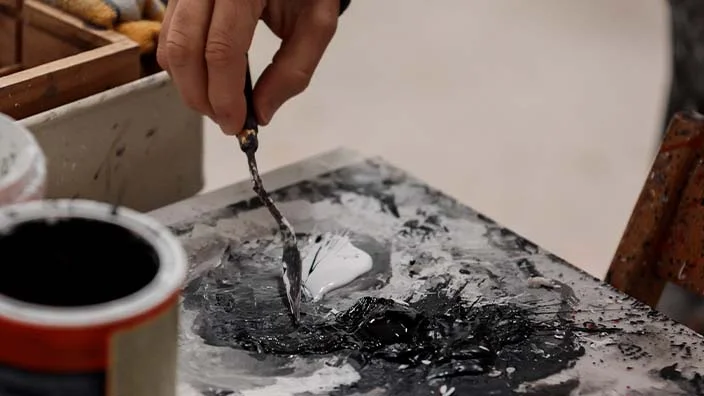
Make a separate blob on the palette to mix them. Make it sure that the size of the parts of colors is equal to those you have used to make the green color.
You have to blend these colors properly and leave no streaks in the blend. You will get neutral and light-gray color paint. Add white color to the mixture if you have to make a lighter shade of the gray, or add black to the mixture to get a darker shade of the gray.
STEP 4: In this step, you have to get full amount of the gray and bright green mixed that you have already created.
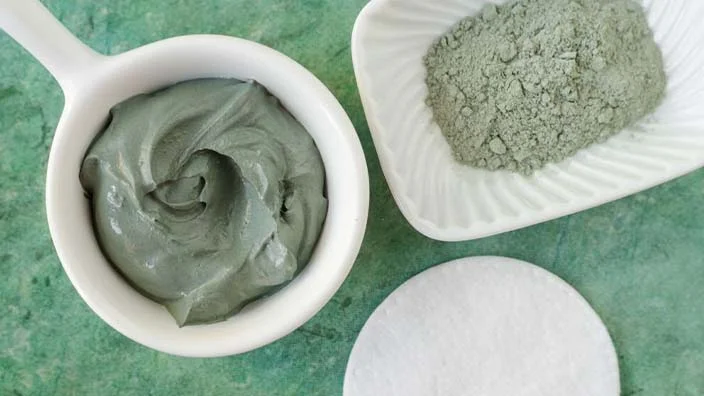
After blending them properly, you will get the sage color you are looking for. Keep in mind that it is possible to add a color to a mixture but you won’t be able take it out. If your sage green looks too dark, add some grass green to balance it.
STEP: Finally, you have to adjust the sage green byadding tiny bit amounts of black, gray, or white. If you have got the desired shade of your sage green but want to make it lighter, you would need to add a small amount of white to it. If you have to make a darker shade of sage, you will have to add a tiny amount of black to it. To get a more somber and subdued shade of sage, you will need to add more gray color to it.
3. Using Primary Colors
This is another method to create your desired sage green color by using the following colors in various combinations by making use of Yellow, Blue, Red, White, Black etc.

STEP : First of all, you have to take and mix one part blue and two parts yellow (1:2) to create the green color.
Mix the colors with the paint brush or palette knife until they get properly blended and there are no streaks left in the new combination. The newly created green color on your palette would be a vibrant, classic green.
STEP 2: Once you have created basic green paint, the next thing you have to do is to add tiny amount of red to the basic green. green you have already made. The green color will begin to change into gray-green or green-brown.
You have to keep adding red paint to the mixture and blend it properly until you get the sage green you want to make. The red color may overpower the mixture, so keep adding it slowly and in small amounts.
STEP 3: If you are still unable to get your desired sage green, you would have to add tiny amounts of white, black, red, or green to adjust the sage.
Add more of your green to balance it if the new sage looks too brown or red. Once you have got the shade you want, you can add white paint to lighten it or add black to get a darker shade.
Black color can overpower the sage quickly, so you have to add very small amount of it to darken the sage, while white is a weaker one and you would need to add more amount of it to get a lightened shade of the sage.
4. Use of Blue & Yellow Colors

This is also very simple and easy method to create a sage green. By following this method, you can create the sage color you want. You just need to have the following two colors on your palette: -
- Blue
- Yellow
In the first step, you have to take two parts of the yellow and one part of the blue (2:1) to create the green color. Then, you have to stir it with the paintbrush or palette knife to blend it properly until you find no streaks in the color you get. Resultantly, you will get a bright green mixed out on your palette.
In the second step, you would need to add some more yellow to the green color you have already created. You have to blend the colors evenly until there are no streaks left in it. Resultantly, you will get the bright sage color created. If you want to get different shades of the sage, you would have to adjust the hue by adding more yellow or green.
Conclusion
If you have gone through this short but interesting guide, we hope you must have got a pretty good idea of the ways to create sage color with the help of different color combinations, which could include but not limited to lemon yellow, gray green, cerulean blue, Prussian blue etc.
You can begin to make the shade of the sage from its base color and adding the red color in tiny amounts to it. In addition, by following another method, you can make your desired shade of the sage ;by mixing two parts yellow paint to one part blue (2:1) to create basic green, and then, you can mix three parts white and one part black to make gray paint.
Lastly, you can also make the sage color you want by mixing the yellow and blue colors in the required amounts. The results will surprise you to create your desired shade of the sage with the help of just two colors.
Frequently Asked Questions
What colors bring out sage green?
You can apply various methods to create sage green with the help of these primary colors i.e. Green, Black, Blue, yellow, Red and White.
Is sage green a blue green?
Sage green is not just only one color, it’s a term, you can say, to describe a family of colors. It is a beautiful blend of blue, yellow, green and even red. Black and white colors can also be added to the blend to make various shades of the sage.
What 4 colors make sage green?
You can use primary colors to make sage green. Even, you can create it by mixing just two colors: blue and yellow. However, it can be created from red, blue, yellow, green, white and black by putting them in various combinations.
Is sage green a pretty color?
Sage looks like an earthly, light green color. It makes a delicate blend and has a muted elegance. Being a subtle green color, sage green gives an aesthetic, topical and calm vibe which feels relaxing to brain.


















